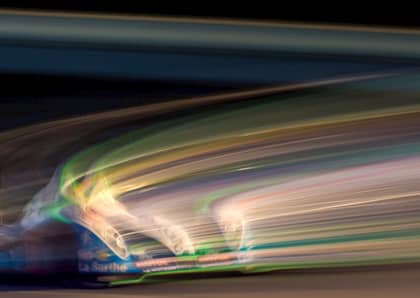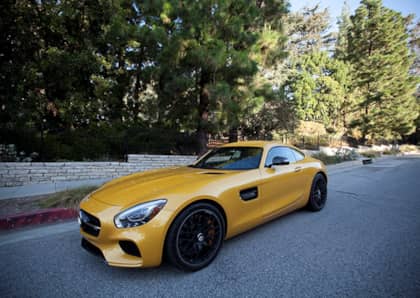Silver Star: Mercedes-Benz CLK GTR

Automotive history is littered with many extreme cars that were built primarily to race, but rules and regulations mandated that street versions had to be produced. Observers see the same path being followed by the current Ford GT. In the LM GT class, the racer is supposed to be a development of an existing production model. Well, the Ford race car made its debut at the Rolex 24 last month, but no one expects to see a road-ready version at a dealer before autumn. It will certainly make the Manufacturers Commission meetings lively when it comes to waivers and Balance of Performance discussions.

Arguably the maddest and most extreme example of this reverse engineering process occurred towards the end of the ‘90s in the GT1 world. Kicked off by Porsche and their 911 GT1, the Nissan R390, Toyota's GT-ONE and the AMG Mercedes CLK GTR rapidly followed. In the latter’s case, just one road car was built in 1997, even though the racer was taking honors on track in FIA GT Championship. Even that example was not homologated till December, months after the last lap on track.

The race program continued with ten victories and both titles again in 1998, with only one defeat for the updated CLK LM. Unfortunately the blot on the copybook came at Le Mans when both cars retired after the failure of a seal in the power steering hydraulic pump, causing the engines to blow. Mercedes had replaced the trusty V12 with a V8 because they thought that it would have a better chance of surviving Le Mans; ironically, if they had run the old unit, they almost certainly would have won, as the victorious Porsche 911 GT-1 98 spent over an hour in the pits during the race.

The 1999 endurance campaign has been virtually airbrushed out of Mercedes’ history – hardly a surprise considering the events that unfolded. The FIA GT Championship had dropped the GT1 class, so the Germans concentrated their efforts on the Le Mans 24 Hours and then planned to head across the Atlantic for the inaugural season of the American Le Mans Series.

In order to achieve this, a completely new car was built: the CLR with Le Mans specifically in mind. A major test program was undertaken. Nothing was left to chance. Victory would be the result. This strategy was derailed by the very public and humiliating aerodynamic problems that the CLR experienced during the Le Mans 24 Hours. Mark Webber flew twice in Qualifying and Warm Up, and then Peter Dumbreck finished up in the trees approaching Indianapolis after clearing the armco barriers during the early part of the race. It would be the end of Mercedes and endurance racing. Back on the streets, AMG Mercedes actually did produce a series of cars for customers, the only one of the GT1 pack to do so. In fact, 26 were built by AMG throughout 1998 and 1999.

The road car was largely based on the CLK GTR racers with the V12 engine rather than the later V8. One area of difference was the integral rear wing instead of the convention racing version.

Six of the CLK GTRs were Roadsters, and two were reported to have a 7.3-liter V12, the engine that was used by Pagani in their Zonda supercar and given the designation Super Sport.

A few luxuries such as leather interior and air conditioning were offered, but all this came at a cost – $1,547,620 (plus taxes), to be precise – making the CLK GTR the most expensive car on sale at the time.

The CLK GTR and CLK LM should be remembered as one of the great Mercedes sportscars, winning 16 out of 22 races contested, but the association with the CLR debacle has stuck. The street version similarly disappeared from view after June 1999, but recently examples have started to appear at auction, which means a long overdue rehabilitation is underway.











